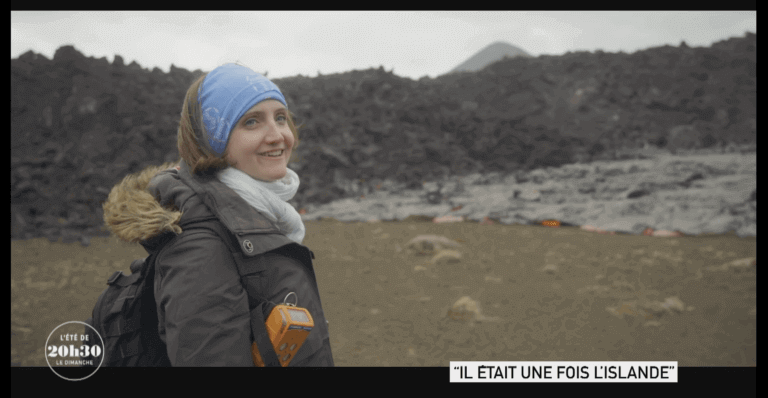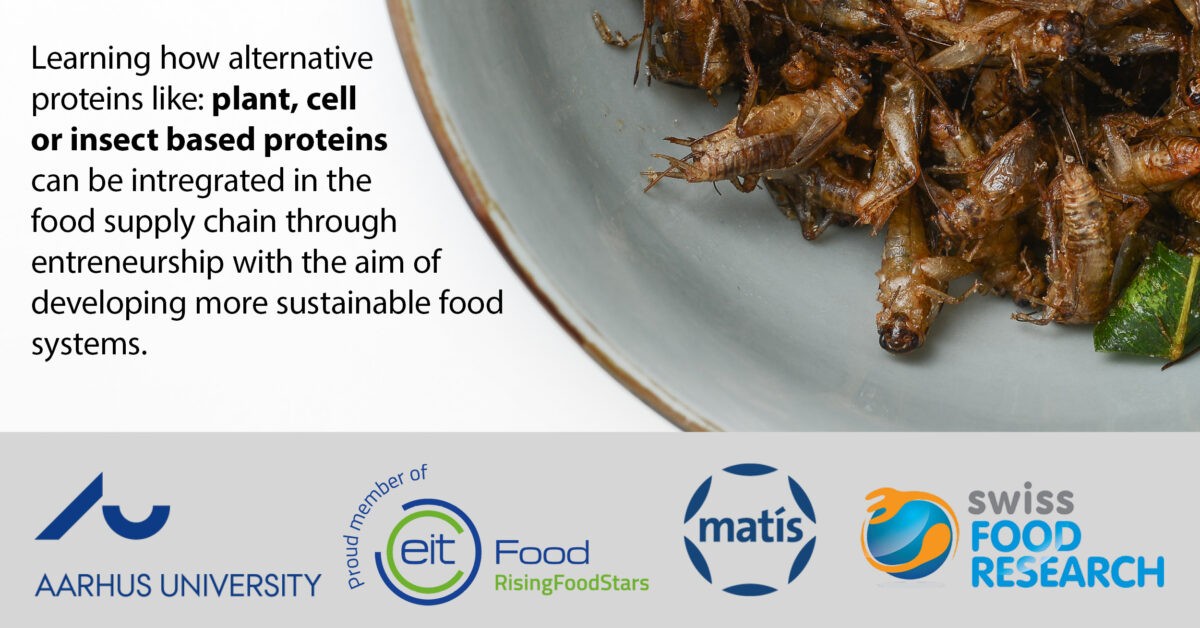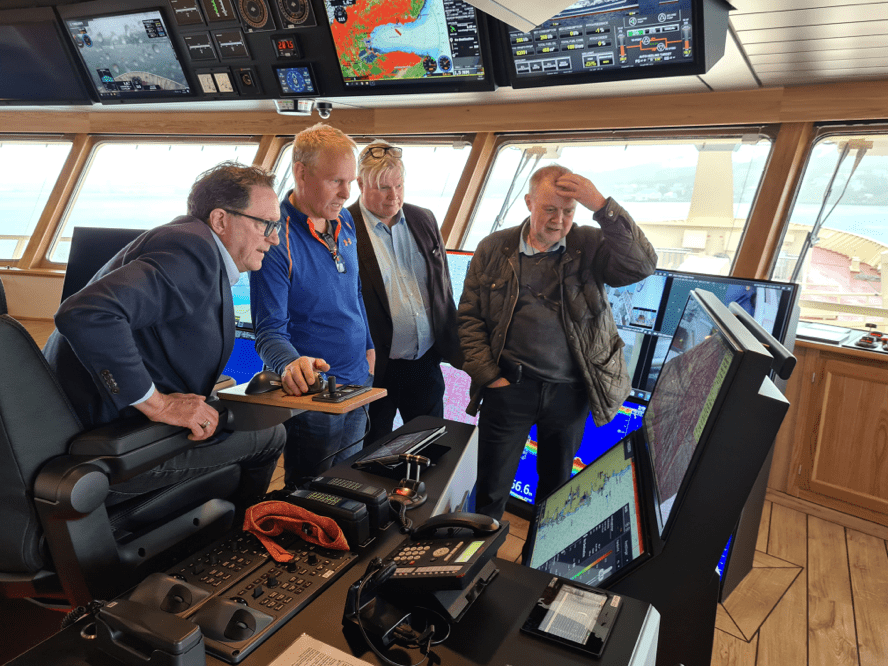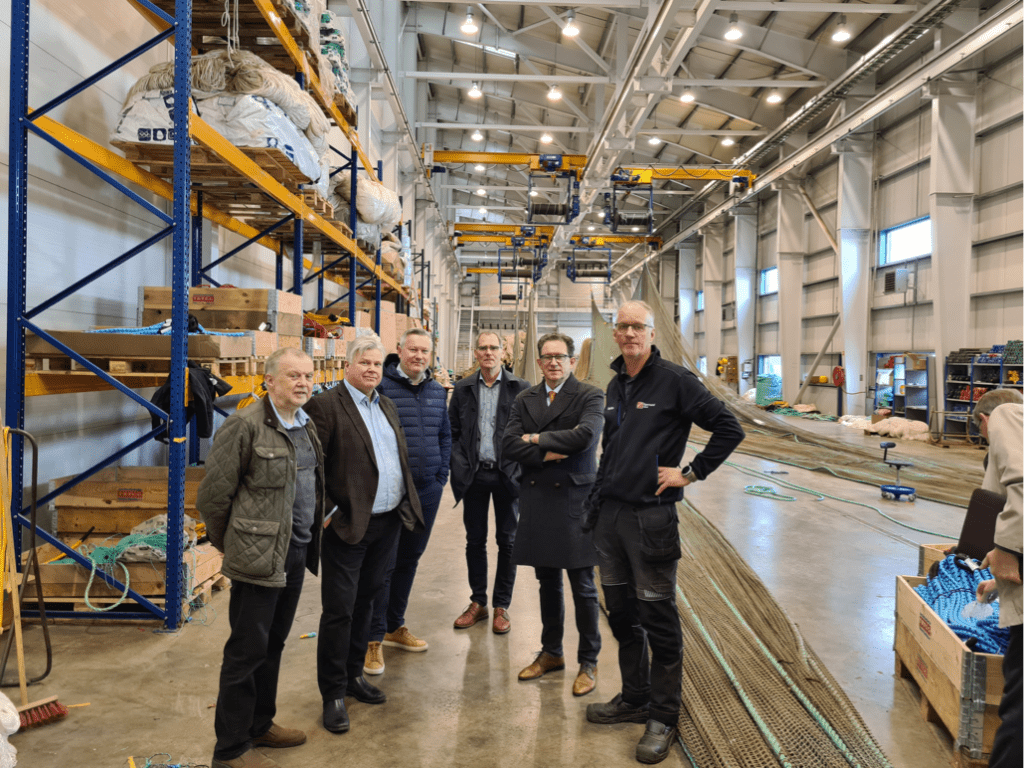Unconfirmed paternity of lambs has led to various advances in sheep breeding in Iceland. Most notable is research related to hereditary diseases, where the confirmed paternity and maternity of individuals is a prerequisite for tracing the lineage of the disease. Modern parental analysis of livestock is based on the analysis of variable genetic markers and statistical comparisons between parents and offspring. The aim of this project was to develop a tool for parental analysis in Icelandic sheep using molecular genetic methods. It is important for sheep breeding to have the opportunity to confirm the lineage of animals. This can be very useful, especially when genetic defects are found in the offspring of insemination rams. It is also essential that the item is properly pedigree. In this study, 17 internationally recognized (ISAG) genetic markers were tested for parental identification in the Icelandic sheep population. The database is based on samples from 514 sheep. The results of the project show that the ISAG genetic boundary works well within the Icelandic financial stock and its sub-stocks. This project has therefore added a new tool to the toolbox of sheep breeders and recruiters.
Author: admin
Aquaculture is growing rapidly around the world and is playing an increasingly important role in ensuring food security. Iceland is the largest producer of char in the world, but char has a great need for protein, which has mostly been met by feed that is rich in fishmeal. Fishmeal, on the other hand, is an expensive source of protein, so feed costs in charr farming are around 50% of production costs, in addition to which fishmeal is a limited resource. It is therefore important to look for new protein sources for char producers. One such option is to use soybean meal, which has been used successfully in salmon farming. However, there are studies that suggest that soybean meal may have a negative effect on the growth, intestinal flora and general well-being of salmonids.
This report discusses the main results of the AVS project "Development of new charr feed", the aim of which was to reduce feed costs and increase sustainability in charr farming by replacing fishmeal with soybean meal in feed. The project also sought to gain an understanding of the effects of different "treatment" soybean meal on the growth, intestinal flora and welfare of char.
Four different types of feed were studied, ie. conventional feed with fishmeal (FM), with untreated soybean meal (US), with enzyme-treated soybean meal (ES), and with untreated soybean meal with added beneficial bacteria (USP). The survival, growth, behavior and intestinal flora of the char fed for 10 weeks on the aforementioned four types of feed were then compared. The char that was tested was a small fish at the stage where there is a lot of growth and the intestinal flora is being shaped; and therefore the effect of the feed is particularly important.
The main results of the project were that feed containing Hypro soybean meal with added FOS beneficial bacteria significantly reduced growth, compared to the other types of feed. The enzyme-treated soybean meal, which contained degraded NSPs that act as beneficial bacteria, as well as the untreated soybean meal with added beneficial bacteria, contributed to a more diverse intestinal flora and increased levels of lactic acid bacteria (LABs) that have been linked to disease and immune resistance, . The results also showed that the fish's behavior towards the untreated soybean meal was significantly different from that of the other feeds, in that they showed less interest in the feed.
The results indicate that the addition of beneficial bacteria at this stage of growth promotes positive changes in the intestinal flora, and can therefore lead to increased tolerance to stress and disease later in life. However, this seems to be detrimental to fish growth. Further research is therefore needed to determine whether the growth will pay off in the later stages of charr growth and whether survival and other positive traits will increase. FOS benign bacteria may not be suitable for fish at such an early stage of development, but it seems that FOS affects metabolism and intestinal needs and the immune system. But further research is needed to draw further conclusions. The enzyme-treated soybean meal did not have the same negative effect on growth, but the variability was greater. LABs in the intestinal flora indicate that the treatment promotes endangered health and resistance to infections, without affecting growth. The results suggest that enzyme treatment of soybean meal in feed contributes to improved health and survival of char. It is important that future research examines the results of this project and compares it with the condition of intestinal tissues. It is also important to further investigate how metabolism, behavior and intestinal flora interact with different feeding in previous life stages, as well as what the effects are on long-term growth and well-being.
Skýrslan er lokuð / This report is closed
Aquaculture is globally growing in importance as part of the solution for future food security. In Iceland one of the most important farmed species is the salmonid, Arctic Charr, and Iceland is the world's leading producers of this cold-water, carnivorous species. Arctic Charr has a high dietary protein requirement which is traditionally provided by diets high in fish meal protein. This drives feed costs that are 50% of the total production costs and puts pressure on wild capture fisheries from which fish meal species are sourced. To facilitate the further expansion of Arctic charr aquaculture it is necessary to find less expensive and more environmentally sustainable feed ingredients. One potential alternative that is widely used in Atlantic Salmon aquaculture is soybean meal, however increasing evidence suggests that for some salmonids, untreated soybean meal can have negative consequences for growth, good health and welfare.
The overall aim of this study was to decrease Arctic Charr feed costs and improve the long-term sustainability of salmonid aquaculture in Iceland by replacing fish meal with untreated and treated soybean meal. This study also aimed to understand the wider consequences of untreated and treated soybean meal on the growth, gut health and welfare of Arctic Charr.
Four different diets were assessed, a fish meal control (FM), an untreated soybean meal (US), an enzyme pre-treated soybean meal (ES) and an untreated soybean meal with an added prebiotic (USP). The survival, growth performance, gut microbiome assembly, and behavior were of juvenile Arctic Charr fed each of these diets during a 10-week feeding trial were compared. The juvenile life stage was selected since it is a period of crucial developmental, when growth rates a very rapid, and the gut microbiome is colonizing, so impact of differing diets can be obtained quickly.
The key findings of this report were that the addition of FOS prebiotic to untreated Hypro soybean meal feed treatment significantly reduced growth compared to the fish meal control when all other feed treatments including the enzyme treated soybean meal performed significantly the same as the fish meal control. The enzyme treatment of soybean meal which aimed to have a secondary benefit of the broken down NSPs acting as prebiotics, as well as the untreated soybean meal with prebiotic had higher gut microbiome diversity as well as a greater presence of Lactic Acid Bacteria (LABs) which are both associated with positive benefits such as more immune robustness and resilience to disease and infection as well as benefits for nutritional uptake and growth. There was also a notable difference in behavior where the fish fed the untreated soybean meal with added prebiotic were both shyer and less active than the fish fed any other feed treatment, indicating that they were more reactive individuals.
When the results of these different tests are viewed together this suggests that the addition of pure prebiotics at such an early developmental stage does promote beneficial changes to the gut microbiome which suggests that the fish will be more resilient to stress and disease later in life and may receive other benefits of prebiotic addition too, however at this early stage the combination with low growth performance suggests that the immune system and gut development may be stimulated but at the cost of energy being drawn away from growth. Salmonids given FOS should be followed from early development through to harvest to see if growth can be compensated and if survival or performance is in fact improved. Otherwise these results may indicate that FOS may not be suitable to apply to diets during such early stages of development, when growth curves are steep naturally. The observation that these fish were also had more reactive coping strategies suggests that the prebiotic application may also effect metabolic rate which could be linked to the stimulation of the gut and immune system, but further experimentation will be needed to elucidate this and also to investigate the consequence of this altered behavior, which could potentially reduce the welfare of an intensively farmed fish. On the other hand, the enzymatic treatment of soybean meal did not show the same negative impact to early growth performance but did influence a higher diversity and LABs presence in the gut microbiome suggesting this method of threatening soybean meal may bring benefits to health and resilience without as much trade-off. These enzyme-soy treated fish groups were also slightly more reactive than the control treatments, but the impact was not as pre-announced as for the prebiotic added treatment. Overall the results suggest that the best potential benefit to long term health and survival of charr when soybean meal is pre-treated with enzymes when used in the diet.
It will be extremely important in the future to combine these results with gut histology data to clarify the impact of differing treatments to internal gut morphology and health. It will also be important to further study how metabolism, behavior and the gut microbiome interact with dietary treatments at this early development stage and what the long-term consequences for production and welfare will be.
This study investigated the effect of seaweed supplementation in dairy cow diets on milk yield, basic composition, and mineral concentrations. Thirty-seven Icelandic cows were split into three diet treatments: control (CON, no seaweed), low seaweed (LSW, 0.75% concentrate dry matter (DM), 13–40 g / cow / day), and high seaweed (HSW, 1.5% concentrate DM, 26–158 g / cow / day). Cows were fed the same basal diet of grass silage and concentrate for a week, and then were introduced to the assigned experimental diets for 6 weeks. The seaweed mix of 91% Ascophyllum nodosum: 9% Digital Laminaria (DM basis), feed, and milk samples were collected weekly. Data were analyzed using a linear mixed effects model, with diet, week, and their interaction as fixed factors, cow ID as random factor, and the pre-treatment week data as a covariate. When compared with CON milk, LSW and HSW milk had, respectively, less Se (−1.4 and −3.1 μg / kg milk) and more I (+744 and +1649 μg / kg milk), while HSW milk also had less Cu ( −11.6 μg / kg milk) and more As (+0.17 μg / kg milk) than CON milk. The minimal changes or concentrations in milk for Se, Cu, and As can not be associated with any effects on consumer nutrition, but care should be taken when I-rich seaweed is fed to cows to avoid excessive animal I supply and milk I concentrations.

The television crew from France accompanied Matís staff up to the eruption at Fagradalsfjall. The expedition was part of the project AirMicrome examining the fate of airborne micro-organisms as the first settlers in terrestrial communities.
The TV crew from France TV captured great videos of the eruption and talked to Pauline Vannier from Matís, who led the team around the area and explained the project in a rough outline.
The video can be found here. The discussion about AirMicrome starts on min. 7:30.

The purpose of the Inspire summer schools under the auspices of EIT Food is to train students and young people in the labor market in innovation and to become entrepreneurs. Students will be trained in product development and business planning for new ideas and new opportunities related to current global food issues. In this way, they are prepared to face the challenges and changes that lie ahead in food production in the coming decades. In 2021, 6 summer schools will be offered, each of which will take about 3 weeks. Matís will take part in summer schools about aquaculture and new protein sources in food that take place in late summer.
Applications have already been opened for summer school for new protein sources of the future!
We encourage master's and doctoral students to study summer school alone and draw attention to the fact that most universities value these courses as 4 ECTS credits.
Further information: https://www.eitfood.eu/projects/inspire
// English version //
Protein for Future - summer school 2021.
Do you want to develop new ideas on the future proteins in our diet to counteract some of the causes of climate change through entrepreneurial capacity training in a 3 week summer school starting August 16th and ending September 3rd?
You will be taught how new and alternative proteins, like plant, cell and insect based proteins, can be integrated in our food systems. You will work and be coached in teams. You will end up in new business ideas that will be pitched in front of professional jury. Critical questions on how to develop a sustainable future food system will be addressed. How can new and alternative food proteins be integrated into our food systems? What are the technological obstacles, and what are the regulatory and consumer / market related barriers? How do we design and develop alternative proteins and how can we develop and formulate alternative protein based food products.
More information: https://www.eitfood.eu/projects/inspire


Oddur Már Gunnarsson, CEO of Matís, Þorsteinn Sigurðsson, CEO of the Marine Research Institute and Kristján Þór Júlíusson, Minister of Fisheries and Agriculture, set out with an escort east to land on 16 June. The reason for the trip was a visit to Múlinn in Neskaupstaður. It was decided to make good use of the trip and visit some of the main workplaces in the East Fjords.
The first place the party visited was Eskja's new and magnificent pelagic processing plant in Eskifjörður. Þorstein Kristjánsson, CEO of Eskja, led an informative tour with others about the building, which is huge and high-tech. Next was held at Egersund in Iceland, which is also located in Eskifjörður. Egersund is a leading company in the field of sales, fishing gear manufacturing and repair of float trawls and seines and the group got to know people in the various jobs.

Next, the company Laxar fiskeldi was visited and held out in the fish farms of those located in Reyðarfjörður. The docks were inspected and Jens Garðar Helgason, managing director, along with other staff also offered a cup of coffee outside in a barge which was welcome in the sleet which did not fit well with the date on the calendar. The visit to Eskifjörður was crowned with lunch at Randulffssjóhús.
In the afternoon we visited Norðfjörður and visited Múlinn, a cooperative house in Neskaupstaður. Many staff gathered in Múlan and the group from the south was given a tour of the house, which is all the most magnificent. The Minister addressed the meeting at the beginning and Oddur Már and Þorsteinn Sigurðsson did the same. Stefán Þór Eysteinsson finally told about the construction and infrastructure of a new biomass plant that Matís is setting up on site in collaboration with Síldarvinnslan.
After the ceremony in Múlan, Börkur, Síldarvinnslan's new ship, was inspected. Gunnþór B. Ingvason, CEO of Síldarvinnslan, guided the group around the ship and told about the infrastructure that is one of the most perfect that happens.
The trip was all the most enjoyable and it is clear that the possibilities for collaboration with companies in the Eastfjords are many and varied.


